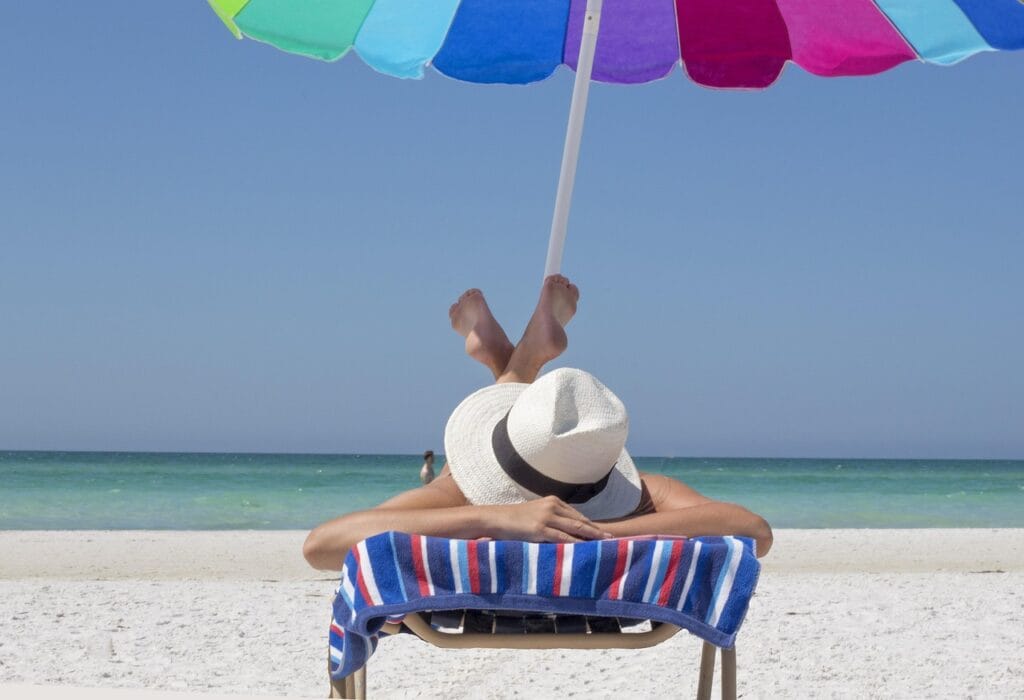At resorts around the world, beachgoers are offered to rent an umbrella - supposedly it will help prevent sunburn. We checked whether this remedy is effective.
Beach umbrella as a way to protect against sunburn are discussing users forums, social networks and services questions and answers. According to some vacationers, umbrellas protect from the sun so effectively that it is even impossible to tan under them. Some doctors notethat if you hide from the sun under an umbrella, you can avoid the risk of skin cancer.
Hiding from the sun in the shade is a logical measure of protection from the sun's rays. However, in the case of umbrellas, everything is not so simple. Firstly, everything very much depends on fabric type. Fabrics treated with special chemicals can block up to 98% of the sun's rays, just like cream with a protection factor of 50. However, there is no guarantee that the umbrellas that can be rented on the beach or bought at a regular resort store are made from this fabric. Secondly, not only direct sunlight poses a danger to the skin, but also reflected from other surfaces. Thus, water and grass reflect less than 10% of the rays, while sand reflects up to 15%, and sea foam up to 25%. Snow reflects the sun's rays best (up to 80%!). People usually don’t sunbathe on snowdrifts, but as for a beach holiday, even if the umbrella is made of high-quality sun-protective fabric, the person resting under it will still receive a fairly significant dose of ultraviolet rays.

In 2014, American scientists conducted study: They invited 81 volunteers with approximately the same skin phototype and asked them to spend about three and a half hours in the August sun in Texas. Participants in the experiment were divided into two groups: 41 people protected themselves from the sun with a beach umbrella, another 40 people used a cream with a high sun protection factor. A day later, scientists examined the skin of the subjects. Cases of sunburn were recorded in both groups, but in the first there were three times more victims than in the second. If we counted each area of sun-damaged skin, the difference was even more significant: 142 in the group with umbrellas versus 17 in the group with cream.
To similar results earlier came and Spanish scientists. They did not put the subjects at risk and used a special sensor that was placed in the sun with and without an umbrella. Although the umbrella was made of a material that transmitted only 5% of direct sunlight, the sensor still “received” about 34% of ultraviolet radiation from reflected and scattered radiation on the sides.
Thus, even if you choose an umbrella made of fabric designed to protect from the sun for going to the beach, sunbathing under it is not completely safe - it will protect you from direct sunlight from above, but not from reflected from the sides. In addition, for the most effective protection, it is necessary to constantly rearrange the umbrella and/or change its location under it depending on the movement of the sun. Otherwise, parts of the body that are outside the shadow will be exposed to ultraviolet radiation in full.
Cover photo: Mikhail Nilov
- Is it true that exposure to sunlight is good for your health?
- Is it true that eating carrots makes your tan worse?
- Is it true that tanning is effective in treating acne?
If you find a spelling or grammatical error, please let us know by highlighting the error text and clicking Ctrl+Enter.






